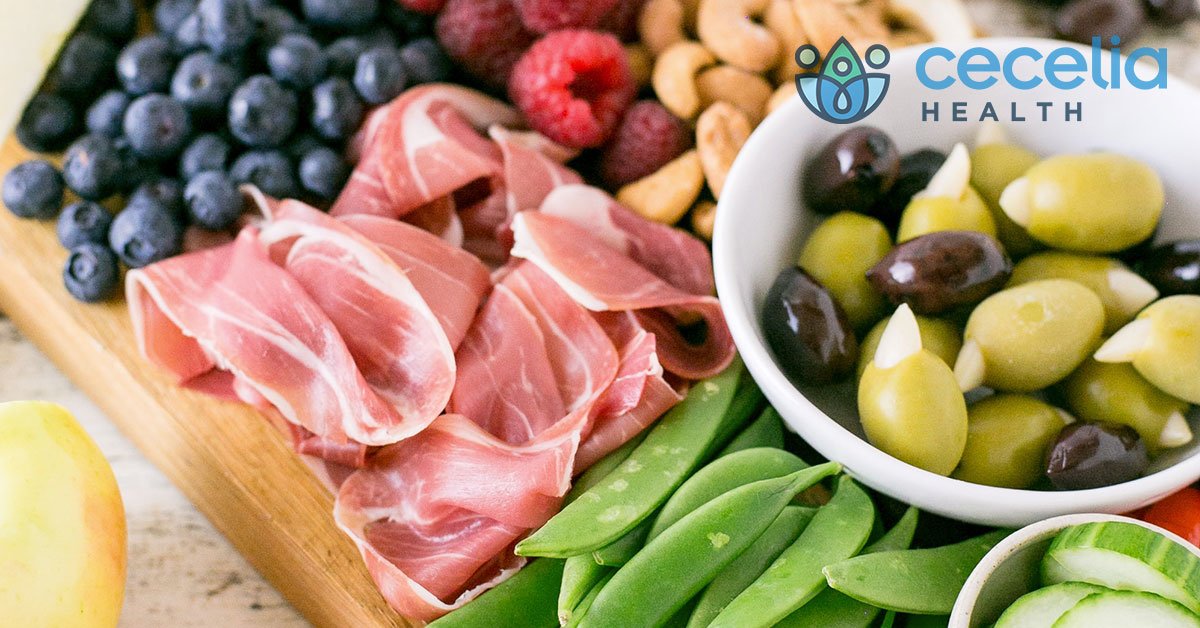Whether you may be working towards a health goal such as weight loss or improved blood glucose control or you are aiming to improve your nutrition, snacks can fit into any healthful meal plan when chosen wisely. In fact, snacks can add essential vitamins and minerals throughout the day to ensure optimal health. Here are 5 tips for quick and healthful snacks.
- Be mindful of your snacking habits. Listen to your hunger cues and eat for physical hunger instead of boredom or out of habit. Pay attention to when you no longer feel hungry to avoid overeating. A hunger scale is a great tool to implement to assess your physical hunger. Avoid mindless eating, which can easily occur when you are eating and multitasking. Avoid doing anything else when you are snacking, such as working at your desk, watching TV, or reading a news article. When you eat your snack, just eat.
- Combine macronutrients (complex carbohydrates, lean protein and healthful fat) to balance your snack. Balanced snacks help you to feel satisfied for longer and offer optimal nutritional value. For example, consider nut butter with apple slices, whole grain crackers with low fat cheese, no salt added nuts with a plum, tuna in water with whole grain crackers, carrots and/or celery with hummus, yogurt with berries, cottage cheese with pineapple or tomato, or even grapes with a boiled egg.
- Plan your snacks in advance. When you plan your snacks before you feel physically hungry you set yourself up for healthful choices. Remember to incorporate balanced snack options such as the ones listed above or try your own. It may also be helpful to keep easy to grab whole foods on hand as well when you’re in a time crunch.
- Choose high fiber sources, such as whole grains, fruits, vegetables, nuts and seeds. More specifically, select whole grain bread/tortilla/pasta, brown rice and bran cereal. Choose berries, a banana, prunes, or fruits with skin like pears and apples. Incorporate sweet potatoes, peas, carrots, broccoli, beans, and lentils. Include no salt added nuts and seeds like almonds, pecans, walnuts, sunflower and pumpkin seeds. Remember to gradually increase your fiber and fluid intake concurrently and speak with your doctor for individualized fiber needs. Here are more tips to increase fruits and vegetables into your meal plan.
- Portion your favorite meals into smaller portions. For example, half a turkey sandwich on whole wheat bread with tomato, cucumber, and romaine lettuce or a smaller portion of spaghetti with whole grain pasta, broccoli and ground turkey. You may also want to try oatmeal with sliced almonds or half a black bean burrito.
Here are more smart snacking tips for people with diabetes. If you’re looking for some great snacks recipes, visit Fruits and Veggies For Better Health and the American Heart Association.
Quick snacks can easily fit into any healthful meal plan and include essential vitamins and minerals to ensure optimal health by being mindful, combining macronutrients, planning ahead, choosing high fiber sources, and portioning your favorite meals into smaller portions.
